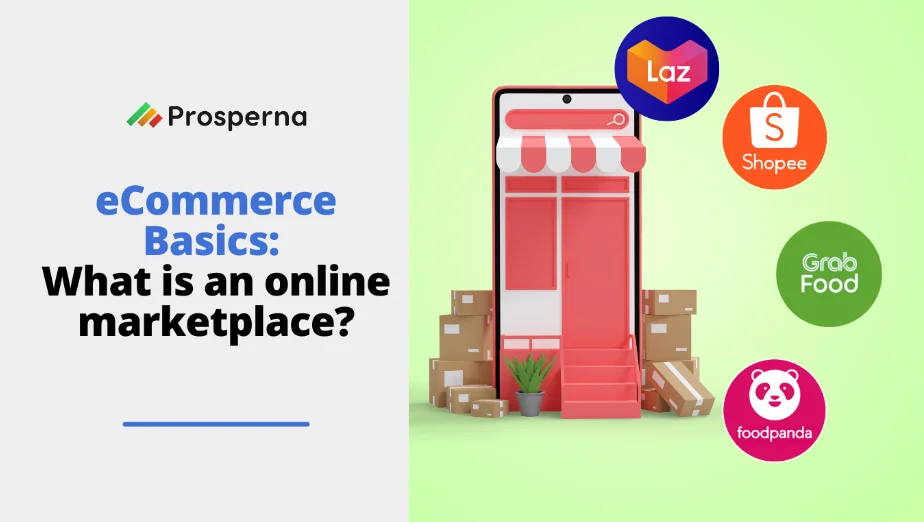If there’s anything apparent about the #NewNormal, the lasting effects of COVID-19 on eCommerce can be found somewhere on top of the list.
As the pandemic struck the world, no one can say for sure how long its implications will last until a working vaccine is developed for mass use. The environment has changed drastically in less than a year, forcing people to stay home under quarantine.
During these uncertain times, people come into terms with the reality of what life is today and transform their consumption habits. In turn, businesses saw eCommerce as an opportunity to keep going and remain stable.
You may share the same mindset but before hopping into the eCommerce bandwagon, let’s explore the effects of COVID-19 on eCommerce you should know first:
1. RECOVERING FROM AN ECONOMIC DOWNTURN
As one of the “strictest” lockdowns implemented in Asia, the Philippine economy plunged into recession.
According to Bloomberg’s economist surveys, the second quarter (April to June 2020) experienced the deepest contraction of 16.5%, compared to the Gross Domestic Product (GDP) from the previous year.
The economy is expected to shrink by 5.5% this year, and since movement is highly restricted, eCommerce is expected to remove the barriers for businesses and consumers as a means to recover. The Bureau of Internal Revenue (BIR) mandated tax laws to require online sellers to register their business activities with the tax authorities, exempting small and temporary businesses.
Government intervention is expected to help boost the economy through short-term investments (taxation) for long-term benefits, as it recovers from the COVID19 pandemic. Ideally, these should result in promoting growing online sellers to legitimize their businesses and contribute to the economy.
2. HOW INDUSTRIES THRIVE
97% of consumers abandon purchases because of the inconvenience that it caused them. eCommerce today focuses on more than just the price tag as demand becomes more highly associated with products and services that offer convenience while providing the best customer experience.
The effects of COVID-19 on eCommerce show subscription services becoming more popular as an essential part of daily life, especially during the lockdown. Cloud and streaming technologies like Netflix, Spotify, and Google are some of the known giants that are thriving because of customer convenience.
Other industries that are not necessarily subscription-based, but also predicted to thrive include eCommerce retailers, real estate, and technology-based companies. What these industries have in common is about going digital and becoming a contactless business. Providing convenience in a pandemic-struck world promotes health and safety.
3. CONSUMER BEHAVIOR TODAY
COVID-19 has forced consumers to resort to online shopping and this sudden change in behavior has resulted in a new set of habits.
Continued social distancing and MECQ in the Philippines have shown panic buying (both online and offline) as people stock up on shelf-stable emergency supplies. As shelves on local groceries go empty, consumers are bulk buying from wholesalers online.
On the other hand, consumers entertain their recreational desires by purchasing products to:
- improve their home and gardens
- celebrate occasions at home with small parties and gifts
- work on their beauty, health, and fitness
- play games and other entertaining activities like digital streaming
Customers prefer to browse for these things online, make cashless payments, and have products delivered to their doorstep. This shift in wants and needs to engage in quarantine life is coupled with a shift in shopping behavior.
4. SMES ENTER SURVIVAL MODE
In the continued battle against COVID-19, offices in the Philippines are forced to close down during MECQ. With government talks of extending lockdown this can mean going out of business or working-from-home for some companies.
Particularly for SMEs, their growths are stunted and experience cash crunch, that limits their ability to operate on a regular basis. There are financial aids that come in the form wage subsidies and tax exemptions, but for a lot of startups, they still need to cut their budgets and lay off their employees to survive.
In their struggle to stay relevant, SMEs are faced with the decision to embrace digital transformation or ceasing to exist as a business. A big portion of this change is figuring out how they can operate safely, deliver products and services to customers, and keep their employees engaged remotely.

5. ONLINE STORES ARE THE NEW BRICK-AND-MORTAR
As transactions move online, the business landscape needs to operate fully-digital, replacing the traditional brick-and-mortar setup.
The growth of Philippine eCommerce sprouted even more because of the COVID-19 effect. Mobility dropped by 60%, because lockdown restricted people from going outside to do things like shopping. Businesses today can be located just about anywhere, as long as they can be found online and delivered to customers.
Traditional marketing has become fully obsolete and online strategies emerge as the current trends. That means you need to leverage technology, be active on social media and consider online selling over manual approaches.
We’ve shared the different ways to start an online store in the Philippines, and how beneficial it is to have an eCommerce website to reach your target market. It doesn’t have to be overwhelming and expensive to get your own as long as you choose the right partner who focuses on doing all the hard work for you!

6. THE FUTURE OF ECOMMERCE
The current effects of COVID-19 on eCommerce pave the way to change the retail landscape completely, even when the pandemic ends.
Consumer behavior may have shifting wants and needs, but they will retain their expectations on convenience and contactless shopping experience. eCommerce is predicted to adopt new practices that improves both business operations and customer experience. These include:
- 5G Transactions for fast and secure payments
- Use of VR & AR to try-on products virtually
- Live Video or Streaming for real-time operations
- eCommerce Data AI Learning for accurate and personalized customer interactions
- Smart Wearable Gadgets to access information faster than handheld devices
- Drone Deliveries to speed up logistics and reduce physical contact
We can expect these new innovations to take over and meet the demands, or existing technologies to replace traditional methods that are not suitable in a world with COVID-19.
CONCLUSION
Sharing these effects of COVID-19 on eCommerce will help you make better decisions for your business because it shows you the direction we’re currently headed.
As a refresher, here are the 6 things we discussed in this article:
- Recovering From An Economic Downturn
- How Industries Thrive
- Consumer Behavior Today
- SMEs Enter Survival Mode
- Online Stores Are The New Brick-and-Mortar
- The Future Of eCommerce
At Prosperna, we partner up with SMEs in the Philippines as an eCommerce technology partner that focuses on putting the customers FIRST.
Create your free-forever Prosperna account now.




